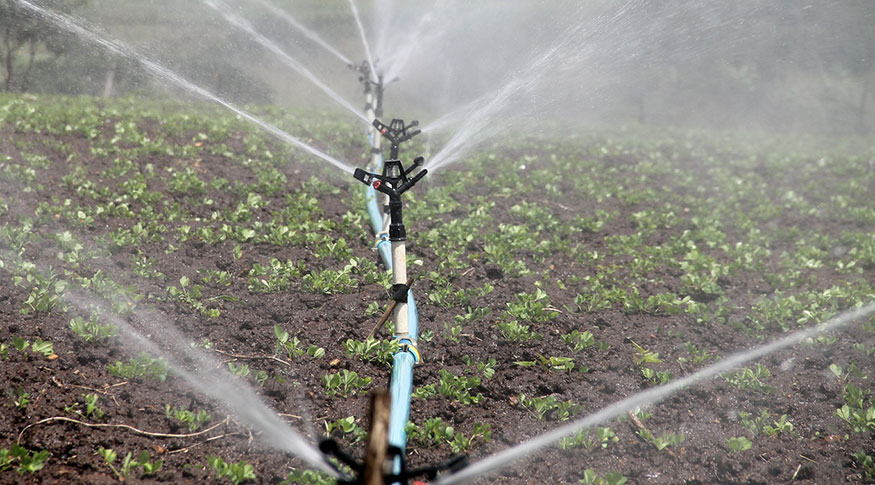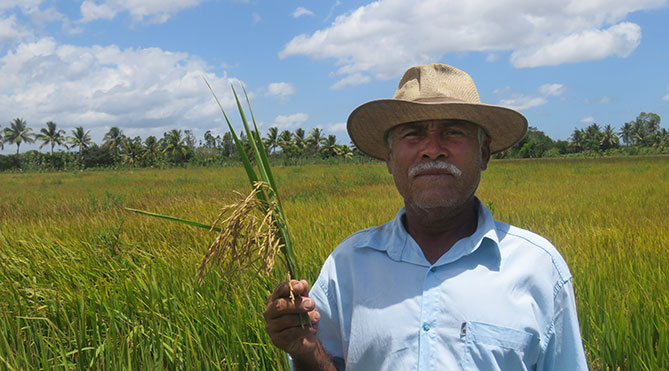CENSUS OF AGRICULTURE
Number of establishments using irrigated agriculture increases more than 50% in 11 years
January 17, 2020 02h00 PM | Last Updated: January 17, 2020 05h13 PM

One of the most relevant processes for the development of agricultural production, irrigation has gained relevance in Brazilian agriculture. According to data from the 2017 Census of Agriculture, the number of establishments making use of that technique increased by 52.6% in comparison with 2006. In the last 11 years, the growth of total irrigated area reached a similar figure: 47.6%. That means more than 500 thousand establishments and a total area of 6.7 million hectares.
Having such a technology at hand helps the producer not fully depend on rain for cultivation. “The plant needs to be nurtured with water. As there is no water scarcity, the cop reaches full potential. And production grows. ”, says a Marcelo de Souza Oliveira, analyst at the IBGE.
Several irrigation methods are currently available. According to the Census of Agriculture, the most commonly used by producers in Brazil are drip irrigation, manual irrigation, sprinkler irrigation and micro sprinkler irrigation.
Marcelo explains that the production area does not make use of irrigation at times because of the dry climate. “Sometimes there is a river close to the planting area, for example. So, irrigation can explore that. It is nothing more than planning the use of water, without having to wait for it to rain within the coming months.
Projects attract and stimulate production
Marcelo believes projects associated with irrigation benefit and make more attractive an area for those who want to produce. A look at the figures of Sergipe, for example, makes that clear. The state recorded an increase of more than 90% in the number of establishments using irrigation between 2006 and 2017.
As explained by Saymo Fontes, agricultural engineer and technical manager of the National Rural Vocational Education Service (Senar), the state has a history of insecurity of producers regarding low rainfall. “There is also the need of optimization of land use and the search for stability of production throughout the year,” he adds.
According to the agricultural engineer, the main challenges for the rural producer that wishes to have their property irrigated are the access to water - mainly in areas such as the semiarid region of Sergipe - and the high level of salt and sodium in the water table. Besides, both the access to electricity and the high cost of implementation of the systems make the procedure extremely expensive for a producer who considers doing that on his own.
This way, some governmental projects and initiatives are of utmost importance. One of them is called Neópolis Plateau, a project by the state government of Sergipe, which provides infrastructure for agricultural production in the area of Low São Francisco River.
According to Ricardo Barroso, a technician in the field of operation and maintenance at the Association of Concessionaires of the Irrigation District of Neópolis (Ascondir), an entity that receives and distributes water from the São Francisco River in the project, the Neópolis Plateau exists only because of irrigation. “In one year, rainfall occurs in about four months in one year, usually from April to June. So, irrigation causes the project to exist and be productive all year long.”
One of the most important products in the Neópolis Plateau is coconut. Its cultivation has only been possible due to micro sprinkling. The technique, which is the most common in the state, reaches more than 3 thousand agricultural establishments; it consists of sprinkling water in an efficient and fast way, with soft and uniform precipitation, and it is seen as easy to maintain.

Besides coconut, rice is also very common in Neópolis. Agricultural producers there invested in surface irrigation more than 40 years ago. One of those producers is José Leite, age 64, who has land in the Irrigated Area of Betume, and is part of the project of the Company for the Development of the São Francisco and Parnaíba Valleys (Codevasf), and which encompasses, besides Neópolis, the municipalities of Ilha das Flores and Pacatuba, in the Low São Francisco area.
José is the owner of one of the 2,860 lots included in the project. The family farmer knows well the importance of irrigation for his crops. “Rice was only planted in the rain period, but now we can do that at any time of year.”



















